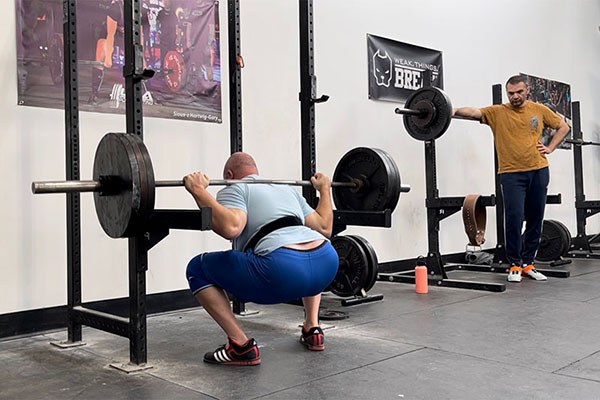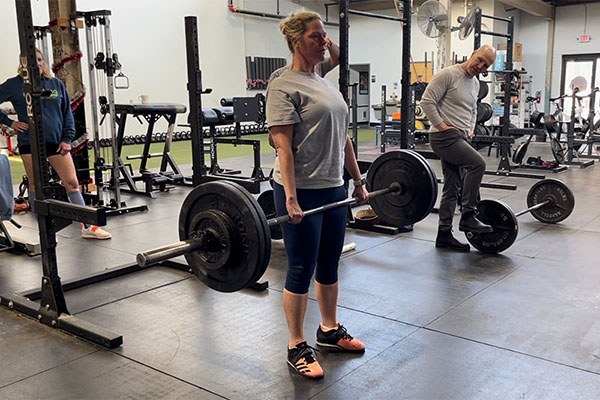
[adinserter block=”2″]
November 20, 2023
Thurman Turkey Edition
On Starting Strength
-
The Standard Model vs. The Two-Factor Model –
The simplest way to improve your performance is to get stronger. Strength is the basis of physical performance. The Standard Model of strength and conditioning tries to blend practice and training and thus does neither well. -
Training is a Family Affair –
The Taylor family was skeptical before starting training at SS Boise, but overall, they noticed diminishing body aches, improvements in aesthetics, and better performance with jiu-jitsu. -
Presentación del Libro “Starting Strength” en español (Parte 3) –
Hari aprovecha la oportunidad para contestar preguntas frecuentes que recibe por parte de sus clientes y/ó público en general, con el fin de desmentir los mitos más comunes del levantamiento con pesas. -
Hips Rising Early in the Deadlift by Mia Inman –
At the start of the deadlift the lifter is taught to initiate the pull by extending the knees – “cued” to push the floor away. This elicits a strong… -
Using the TUBOW –
Rip teaches you how to use a Terribly Useful Block of Wood to correct knee position and back angle issues in the squat. - Weekend Archives:
Wanna Bet? by Bill Starr ndash;
When I moved from Marion, Indiana, to York in late February of 1966, to take over the position of assistant editor of Strength & Health… - Weekend Archives:
The Correct Use of Fractional Plates by Mark Rippetoe –
People keep posting questions on the forums about their bench and press that lead me to strongly suspect they are trying to take…
In the Trenches

Joy deadlifts 125 lb for her work set at Fivex3 Training’s Starting Strength Camp last Sunday.[photo courtesy of Fivex3 Training]
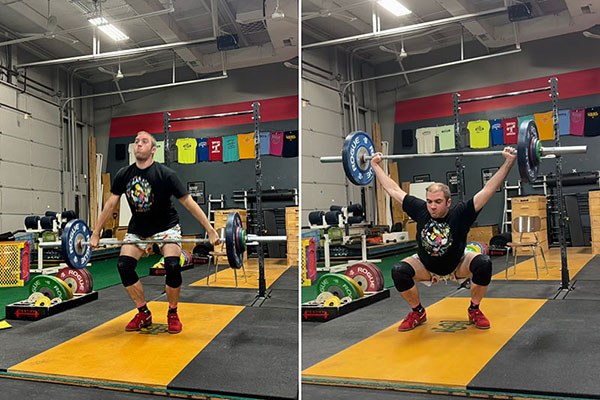
Paul snatches 71 kg for a PR at Testify Strength & Conditioning in Omaha, NE. Paul is preparing for Testify’s annual Christmas Classic weightlifting meet, which will be held on December 2nd. [photo courtesy of Phil Meggers]
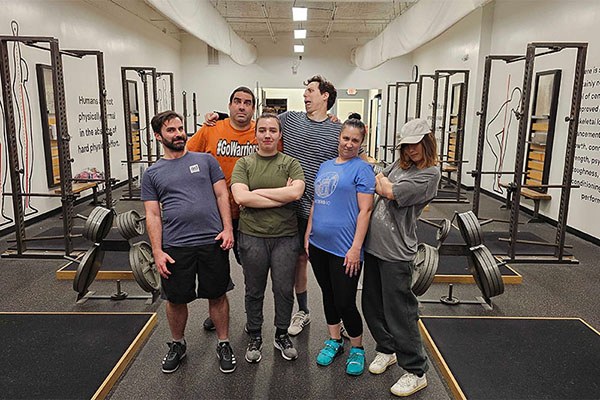
Just another Tuesday night at Starting Strength Austin. Working hard or hardly working? [photo courtesy of Brian Payne]
Meet Results
This past Friday, November 17, marked the inaugural Testify Benching Bonanza, a competition which is conducted in a “rising bar” format. For the women, first place in the open division went to Brianne Holm, first place in the masters division went to Sharon Foster, and the heaviest bench award went to Brianne Holm. For the men, Jeff Radil swept all three divisions, taking first place in the open, masters, and heaviest bench categories. Full Results
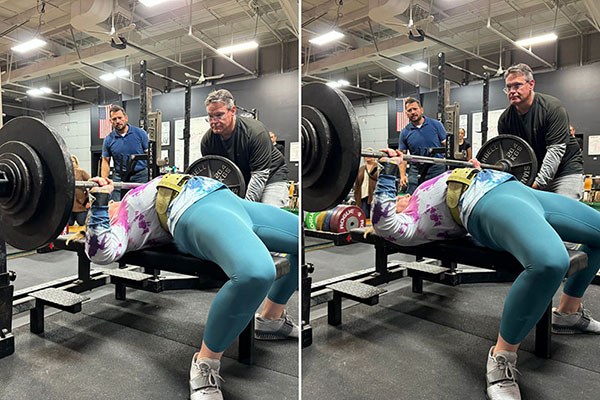
Brianne goes 3-for-3 on the day and benches 202.5 lb for a PR third attempt at the inaugural Benching Bonanza at Testify Strength & Conditioning. [ [photo courtesy of Phil Meggers]
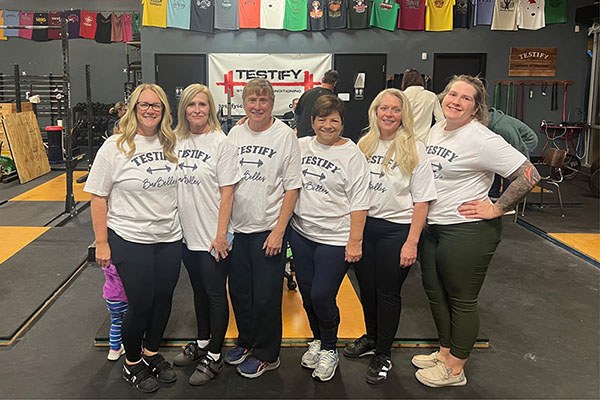
The Testify BarBelles showed up and represented well at this weekend’s Testify Benching Bonanza! From left to right: Jill, Julie, Sharon, Judy, Denise, and Brittany. [photo courtesy of Phil Meggers]
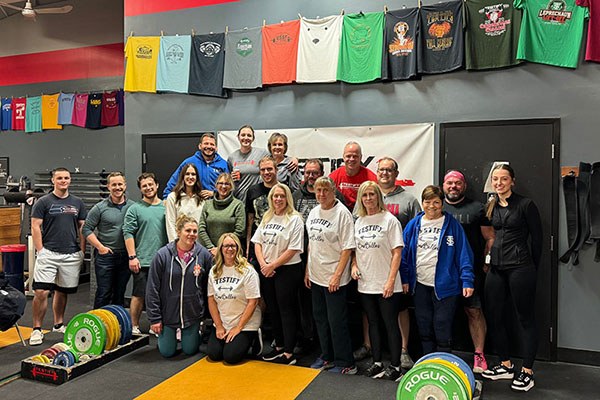
Some of the competitors, judges, loaders, and spotters from this weekend’s Testify Benching Bonanza gather together for a post-meet group photo. [photo courtesy of Phil Meggers]
Get Involved
Best of the Week
Barbell row similarities to power clean
BareSteel
Hi Rip, I noticed a few similarities between the barbell row as you teach it, and the power clean. For anyone new around here, this video shows Rip’s method for barbell rows: Revisiting the Barbell Row
1. Both exercises have a narrow band of time for force production to occur. You can’t grind out a power clean and you can’t grind out a barbell row performed as above (which differs from, say, a strict bodybuilding style row). It’s a brief window of time for full acceleration of the load.
2. The top position can vary a bit, and what’s acceptable is subjective. For instance, a light power clean can be racked with just a little knee flexion during the catch. A heavy one may be caught in more like a quarter- or half-squat. Eventually too much knee flexion makes it a squat clean. Same with the row – it’s okay to bring the torso down to the bar a bit, but not excessively, and under your rule the bar must touch the belly.
3. “Fast elbows” cue is applicable for both lifts. Elbows in a barbell row accelerate UP quickly and in the power clean they rotate Forward quickly.
I don’t have an exact question, but thought you might comment on the comparison I’m drawing here. For anyone on the novice LP, let me be clear that I am not stating that rows are equivalent to power cleans. I’m only discussing a few similarities in the movements, but the training effects are very different and they are not interchangeable exercises.
Mark Rippetoe
Correct: the barbell row is a power exercise, in that it cannot be done slowly. This observations are the same as mine. I’m glad somebody else picked up on the similarities.
Best of the Forum
14 year old kayaker
s.oliver
Have started training a nearly 15 year old female kayaker competing at national level. Paddles 4-5x/week, plus frequent races at the weekend.
5ft4. More muscular than the average 15 year old female. First session DL 2×5 155 lb, SQ 3×5 99 lb Has benched with another coach before. 1×5 99 lb.
Training her 2x/week.
Have watched the SS videos on training teenagers, which I’ve found helpful.
What are your thoughts on her benching?
In a way it would be useful for upper body strength for her sport – though her sport is naturally very dominant in anterior/internal shoulder rotation movement.
For AC joint health, do you suggest just doing the press, or fine to combine bench and press?
Mark Rippetoe
Just like every athlete in every sport, she needs to be stronger. GENERALLY stronger. So she needs to do the NLP as written.
TommyGun
When I take new kayakers out on the water, they have an incorrect mental model of how the kayak is propelled forward in the water, much like a rank novice has an erroneous conception of how a squat should look. The kayak does not move because of the stroke, it is not an “arm workout”.
It is the transmission of the force from the hands through the skeleton to the feet which are locked in and pushing against the pedals. The body is tight and the pedals are merely the ground reaction; the tighter the body the more efficient the transmission of force, and the stronger she is the more force will be applied to both the hands driving the paddles and the feet locked in against the pedals. Clearly the Novice Linear Progression will improve both. As always, make sure she eats and rests.
Love the question about kayaking and it is amazing how the answer is universal to all sports. No one else may care but keep us updated on her progress in the gym and on the water. It is such an perfect illustration of Rip’s The Two-Factor Model of Sports Performance
[adinserter block=”2″]
Credit : Source Post


